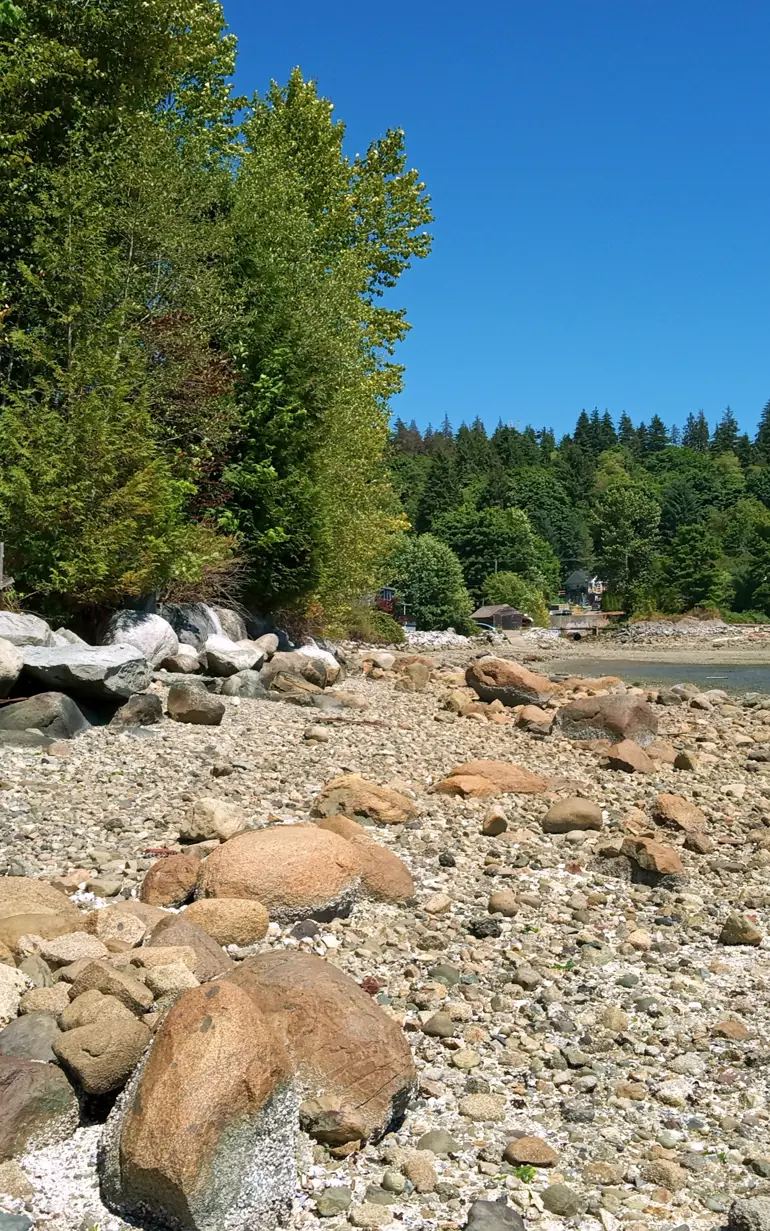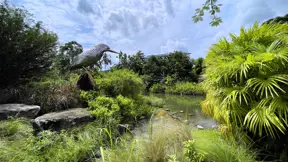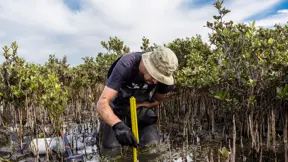
Tsleil-Waututh Nation shoreline adaptation and restoration
Novel methods to protect and restore an eroding First Nation shoreline using nature-based solutions and traditional ecological knowledge and stewardship
The Tsleil-Waututh Nation (TWN, Indigenous name səlilwətaɬ, meaning ‘People of the Inlet’) is one of many Coast Salish peoples whose traditional territories span the Pacific Northwest, including parts of British Columbia, Washington and Oregon. In response to decades of shoreline degradation from erosion, vessel wake, wave action and loss of upland sediment, TWN initiated the Reserve Shoreline Adaptation and Restoration Project to protect and restore their foreshore along səl̓ilw̓ət (Burrard Inlet). The shoreline is a culturally significant and ecologically vital space for TWN, and the project reflects the Nation’s commitment to stewarding this land and water for present and future generations. Together with project partners, DHI supported TWN in developing shoreline designs using advanced modelling and physical testing. The initiative is Indigenous-led and emphasises the integration of nature-based solutions and TWN marine stewardship technologies to enhance resilience, restore ecological health and reconnect the community to the shoreline.
Challenge
TWN needed to address long-standing shoreline issues while embracing opportunities for ecological and cultural renewal. One key challenge was ongoing shoreline erosion — some areas had already experienced land loss of up to 13 metres, placing pressure on community lands, access points and important archaeological sites. Previous attempts to manage erosion through the installation of hard infrastructure (e.g., rip-rap) offered limited success and in some cases has contributed to habitat degradation and loss of intertidal connectivity. Additionally, coastal flooding, erosion and ‘coastal squeeze’ (the compression of habitats between rising seas and fixed infrastructure) are expected to intensify with future sea level rise and climate change.
The degradation of marine habitat has also impacted local biodiversity and the availability of traditionally harvested species such as shellfish, crabs, and seaweeds. The loss of shoreline integrity has both cultural and environmental impacts, highlighting the urgent need for innovative solutions that restore habitat and build long-term resilience.
Solution
To address severe erosion and environmental degradation along the reserve shoreline, TWN partnered with DHI to lead a comprehensive, data-driven and community-centered coastal adaptation initiative — implementing nature-based designs, advanced modelling and collaborative planning to protect and restore the coastline.
Solution highlights:
- Coastal process and resilience modelling
DHI helped simulate the effects of tides, storms and rising sea levels to guide the design process and improve resilience. This included assessing how coastal conditions and vessel wakes impact the shoreline. - Nature-based design integration
Together with TWN, DHI co-developed shoreline designs that incorporate ecological restoration and Indigenous stewardship. These designs aim to protect the environment while supporting cultural values, with features like beaches, marshes and habitat areas. - Physical modelling validation
DHI tested the preferred design in a scaled 3D model to ensure it could withstand future coastal conditions like extreme waves and rising seas. Evaluated overtopping, flooding and stone stability under future sea states. - Future-proof design guidance
DHI defined material specifications, crest elevations and adaptive design pathways to support long-term shoreline protection, and provided resilient design thresholds based on projected sea level rise (0.49–1.15 m) and storm scenarios. Construction tolerances and freeboard allowances were included to allow for flexible implementation.
By combining ecological restoration with cultural priorities, DHI helped develop a nature-based shoreline design that adapts to future climate conditions. Unlike conventional erosion control projects, this approach emphasised co-development, habitat restoration and long-term community access.
Results
DHI’s modelling-driven, nature-based approach offers multiple benefits, aligning with TWN values and fostering ecological resilience. Design modelling confirms that the preferred concept will reduce wave-driven erosion along 500 m of shoreline, protecting areas that have already lost up to 13 m of land. Crest elevations and structural features were designed to withstand 1-in-100-year (1% AEP) storm events, accounting for projected sea level rise to year 2100, to help protect the irreplaceable cultural and archaeological sites located on TWN lands. Once implemented, the nature-based features such as cobble beaches, marsh benches and habitat islands will enhance biodiversity and restore native plant and marine species.
The project will reconnect the community to the shoreline with accessible paths, gathering spaces and a new canoe launch, ensuring safe access for all ages. With future climate change in mind, the design accounts for sea level rise and ensures long-term resilience. This initiative will restore the environment, strengthen cultural ties and lay the foundation for a resilient future, benefiting both the community and the environment.
Client:
Tsleil-Waututh Nation
Location:
British Columbia, Canada
Related SDG(s):
SDG 13: Take urgent action to combat climate change and its impacts
SDG 14: Conserve and sustainably use the oceans, seas and marine resources for sustainable development
Technology:
About our client
The Tsleil-Waututh Nation (TWN) is an Indigenous people of the Coast Salish group, located in the Pacific Northwest. Their ancestral lands span parts of British Columbia including the area around Burrard Inlet, which is central to their cultural and spiritual identity. Known as the ‘People of the Inlet’, TWN has a deep connection to the land and waters with a rich heritage and strong commitment to environmental stewardship, cultural preservation and sustainable development.
You may also like
How can we help?
With our global network of offices, we make sure you get the right answers to your local needs. Tell us about your water challenges and we will get back to you.


